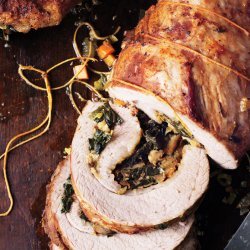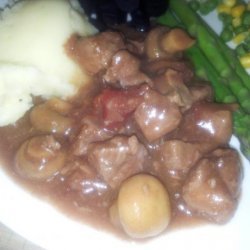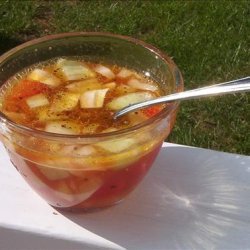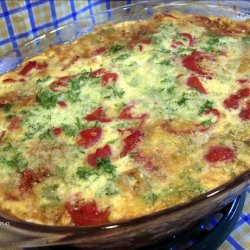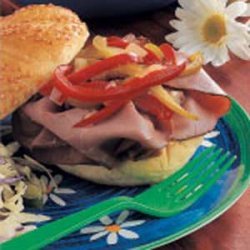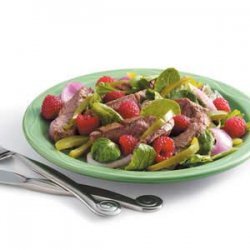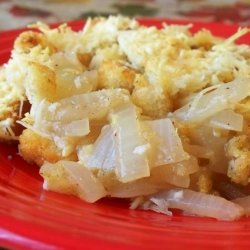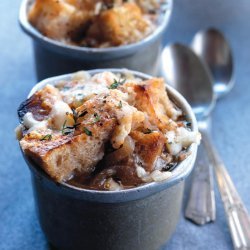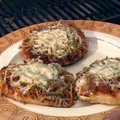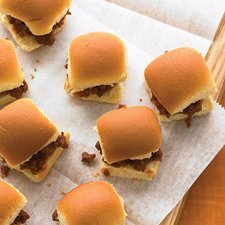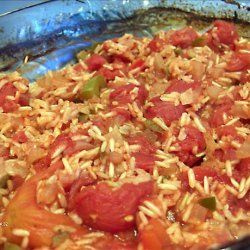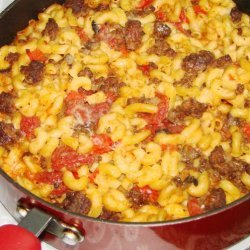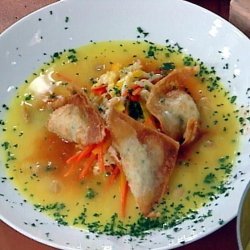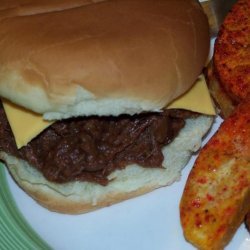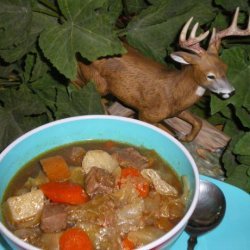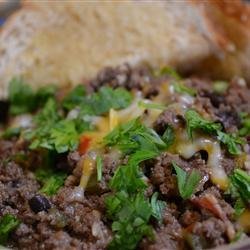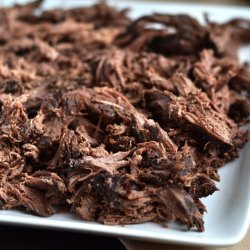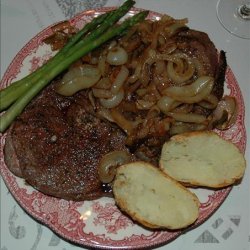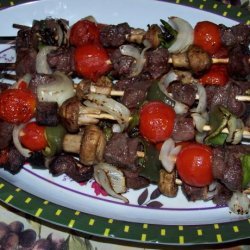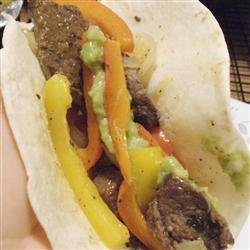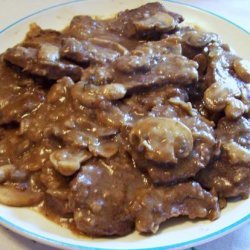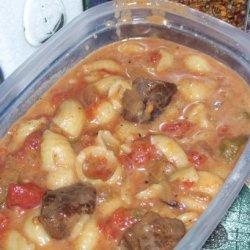Directions:
- Start cubing the meat, discarding the trimmings.
- Put 1 inch of water into the canner and start it boiling. Wash 7 quart jars thoroughly with soap and hot water, place them in the canner and apply the lid, creating a sterilizing steam bath for the jars. (Be sure to check the rims of the jars for chips and cracks before going any farther!) If you're not almost ready to fill the jars, then once steam has been achieved, turn the burner off. The heat will keep and steam will be achieved easily again when you're almost ready.
- Chop the green peppers and onions and saute them in the olive oil. I usually have to do this in 2 skillets. Set aside.
- Start the canner steaming again to keep the jars hot. In a large saucepan, get your rings boiling. If there's not room to do all this (with 2 skillets, a saucepan and a huge canner) all at once, then do this in place of one of the skillets, while you're cooking the first set of venison. Once it starts to boil, set it aside with the lid on it. It will be nearly ready when you need it. Then you can reintroduce the other skillet to continue cooking the venison faster.
- Cook the venison chunks in those two skillets, applying roughly 1 tsp of salt and pepper to each skillet (I find that one filled skillet equals one filled jar, more or less). I usually only cook them to medium before I start filling jars.
- Turn the heat up to at least medium under the canner and remove the lid.
- Using a funnel, start with one skillet and fill one jar, while it's still within the hot canner. I use tongs and place them carefully for maximum use of space. When it's about 1-1/2 inches from the top rim, pour the liquid from the skillet into the jar as well. Then I add about 2/3 c onion-pepper mixture, or as much as you can fit and stuff in there to bring the level of food to the 1-inch mark. Do not overfill beyond 1 inch from the top.
- Repeat until you've filled all the jars.
- If you didn't have room on your stove for the saucepan with the rings, then get that back on the stove when you only have 1 or 2 jars left to fill. The rings will therefore be ready when you're ready to cap the jars.
- When the jars are filled, wipe the rims thoroughly with a paper towel. Turn the heat off of the saucepan with the rings. Working quickly, dip one lid into the water, introducing it to its ring just long enough to warm it up. Then grab the ring with your tongs (with the lid nested in it), tip the water out of it and apply it to the jar. I just twist it enough to know that the rings are seated on the grooves properly.
- Once all the rings and lids have been applied, I remove each jar from the canner and tighten each ring on each jar. I place a potholder in my left hand, lift the jar with my right, place the bottom of the jar on the potholder. Hold and twist finger-tight. Yes, it's hot. Yes, I usually have to change to another potholder at least once. But I want the food, the jars, the rings and the lids to stay hot and BE hot and sterile when I close up that canner. I've had great success with this technique.
- Finally, close up the canner, shut the valve, turn up the heat (it it's not already up to at least medium), and wait for the pressure to reach the appropriate level for your altitude (consult your canning guide, or the internet). Once it has reached this level (about 10 pounds of pressure or more), start your timer for 90 minutes. Turn the heat down, keep monitoring and adjusting.
- With the meat that's left, you can add the beef broth and onion/pepper mix, cover and cook for about a half-hour on low heat, while you clean up the kitchen, or prepare a side. Watch the pressure on the canner. This cooked meat may not be as tender as the canned meat, but it's what's for dinner, after all that work!
- After 90 minutes, turn the heat off. I usually allow the pressure to stabilize naturally. Release the valve, remove the lid, remove the jars with jar holders. Allow them to sit, undisturbed for about 24 hours or until completely cooled. Label the lids, remove the rings, and store properly. Be sure to consult an official canning guide.
- Enjoy!
Nutrition Facts
| Amount Per 1 Serving | |||
| Calories | 6921 Kcal (28977 kJ) | ||
| Calories from fat | 1726.31 Kcal | ||
| % Daily Value* | |||
| Total Fat | 191.81g | 295% | |
|---|---|---|---|
| Cholesterol | 979.56mg | 327% | |
| Sodium | 19593.76mg | 816% | |
| Potassium | 1955.14mg | 42% | |
| Total Carbs | 78.79g | 26% | |
| Sugars | 27.3g | 109% | |
| Dietary Fiber | 22.92g | 92% | |
| Protein | 1215.47g | 2431% | |
| Vitamin C | 411.6mg | 686% | |
| Iron | 165.1mg | 917% | |
| Calcium | 637.2mg | 64% | |
| Amount Per 100 g | |||
| Calories | 101.57 Kcal (425 kJ) | ||
| Calories from fat | 25.34 Kcal | ||
| % Daily Value* | |||
| Total Fat | 2.82g | 295% | |
|---|---|---|---|
| Cholesterol | 14.38mg | 327% | |
| Sodium | 287.56mg | 816% | |
| Potassium | 28.69mg | 42% | |
| Total Carbs | 1.16g | 26% | |
| Sugars | 0.4g | 109% | |
| Dietary Fiber | 0.34g | 92% | |
| Protein | 17.84g | 2431% | |
| Vitamin C | 6mg | 686% | |
| Iron | 2.4mg | 917% | |
| Calcium | 9.4mg | 64% | |
* Percent Daily Values are based on a 2000 calorie diet. Your daily values may be higher or lower depending on your calorie needs.
Find out how many calories should you eat.
Get Your Recipe of Health!
Follow RecipeOfHealth on Facebook!


